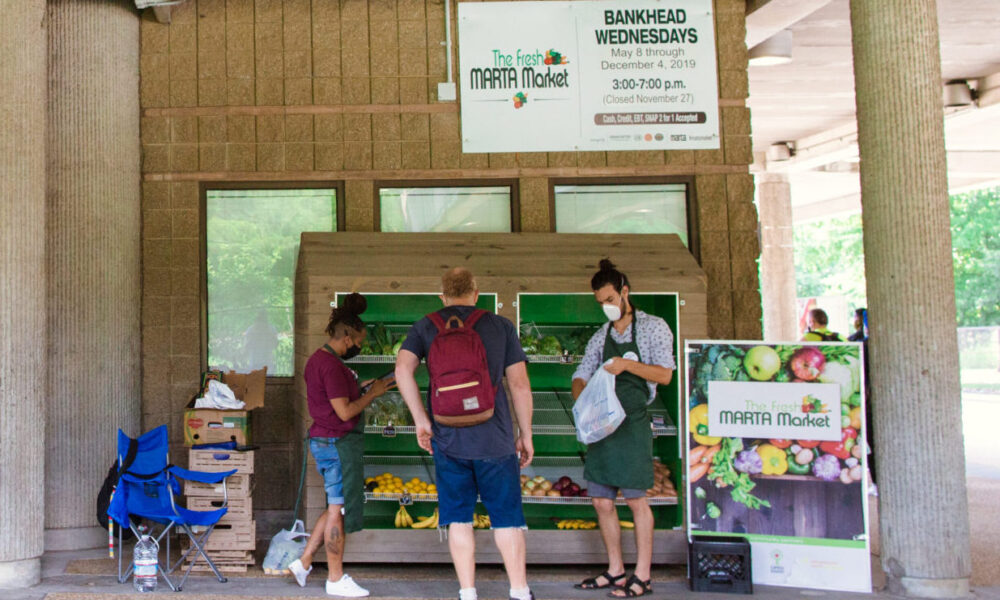To transform our food systems, we need to produce food that is sustainable and nutritious instead of the cheap calories served by industrial mega-corporations. Food that is grown with agroecological practices by small and midsize farmers, harvested by farmworkers who are paid fairly and have labor protections, and distributed locally or regionally to all communities is key to healthy lives and a healthy planet.
Here lies the challenge. In the United States, approximately 10% of households experience food insecurity; in Black households it’s 20%, and in Hispanic households it’s 15%. In addition, 53.6 million people in the United States live in a low-access area for food, meaning they are at least half a mile from the nearest supermarket. These measures may not show the issue fully, as I’ve argued before, since many more households may not identify as food insecure but may struggle to afford sustainably produced, nutritious food. This is particularly true with dramatic inflation and the sunsetting of the COVID-19 expansion of Supplemental Nutrition Assistance Program benefits. It is quite clear that, for many, eating sustainably and nutritiously is not an option.
This does not mean that the situation is hopeless. The federal government has the power to give people more and better choices about what we eat, and this year presents an excellent opportunity for positive change. As a social scientist who studies sustainable food systems, I have two very simple pieces of advice for lawmakers negotiating the 2023 food and farm bill that would make crucial steps toward transforming our food system: 1) provide nutrition assistance programs with enough funding so people can afford sustainable and nutritious food, and 2) support local farmers and community-based organizations with funding to develop new markets that increase access to sustainable and nutritious food.
Part one: Provide incentives for fresh, local produce
The public already financially supports a major program that helps fight food insecurity: the Supplemental Nutrition Assistance Program (SNAP) serves roughly 42 million people each month. SNAP is an essential antipoverty program, but it is not enough—too many people struggling to afford food are considered ineligible, and even those who qualify are not able to afford sustainable, nutritious diets. Meanwhile, cheap processed food is making too many of us sick, at immense cost.
I know this may sound simplistic, but why not just provide more money to help people purchase fresh, locally grown fruits and vegetables? Turns out, in many places, such programs already exist. Known by many names including Double Up Food Bucks or Market Match, these programs match SNAP funding with additional incentives that double SNAP purchasing power for fruits and vegetables. In other words, SNAP users can get $20 worth of produce at a local market for half the price.
These incentive programs have already demonstrated their merit at the local and national levels. Double Up Food Bucks started in 2009 in Michigan and has since expanded nationally. Funded both through federal grants and private dollars, 1,325 sites participated in 2021 and supported 763,962 people across the country, contributing more than $56.7 million to local businesses.
Evaluations of programs that received federal funding for nutrition incentives through the Gus Schumacher Nutrition Incentive Program (GusNIP) showed that participants ate more fruits and vegetables than the average US adult, and the longer they participated, the more fruits and vegetables they consumed. Although these increases were modest and still fell below the federal guidelines for consumption of fruits and vegetables, increased incentives and longer participation would likely lead to consumption that follows the guidelines. And while the researchers did not analyze changes in food insecurity levels, a parallel “food as medicine” program that wrote “prescriptions” for fruits and vegetables (such as this program by DC Greens, a food justice organization in Washington, DC) led to a decrease in food insecurity. We hope to see similar results for other nutrition incentive programs in the upcoming years.
Despite the evidence, nutritional incentives are still a patchwork solution across the country, supported through different mechanisms and only available at markets that raise enough funds—through GusNIP funding, private donations, and other mechanisms—to support the program. And the funding per family is still limited: for instance, the Fair Food Network estimated that, on average, each family participating in Double Up Food Bucks in 2021 received only $26.60, or roughly 50 cents a week. The federal government should increase GusNIP funding to ensure not only that everyone has access to this program, but also that everyone receives enough dollars to put sufficient fresh fruit and vegetables on the table.
Part two: Fund local farmers and their markets
Direct incentives to SNAP recipients need to work in tandem with increased access to markets that sell locally produced fruits and vegetables. Farmers’ markets are a popular way to do this—in 2019 there were more than 8,700 in the United States. And there are other ways for communities to access fresh, local produce, including farm stands, mobile markets (markets on wheels that make regular stops at multiple sites each week), and retailers that source locally.
Establishing a new market is challenging—it takes time, energy, and funding. This is where federal funding is integral to expanding market access for underserved communities. The federal government provides funding through the Local Agriculture Market Program (LAMP) to create and operate or expand a market, as well as funding for farmers to develop additional products from what they grow, such as fruit jams and pickles.
Just like the nutrition incentives, this program is win-win: these investments support a new generation of farmers, protect consumers and farmers against increasing corporate competition, and provide communities with direct access to local and regional foods. An evaluation from 2014 (the only one I could find) found that LAMP served 19,423 producers, and programs with a goal of direct market development served 3.5 million customers. In addition, each dollar invested resulted in an estimated $2.67 for the local community. Most of the new markets also provided nutrition incentives to SNAP recipients. While the US Department of Agriculture does not offer more recent evaluations (but perhaps will soon, in line with its Equity Commission recommendations), we expect that the benefits from 2014 have continued.
Unfortunately, as is the case with the nutrition incentives, this funding is currently limited. My back-of-the-envelope calculation shows that only 25% of funding requests to the farmers’ market and local-food sections of LAMP are funded each year. That means many communities may go another year without regular access to fresh fruits and vegetables, or that an existing organization could fold in that time without this funding. The federal government should expand funding that promotes access to local markets, and continue robust evaluation of LAMP to fully understand its benefits for communities.
Organizations leading by example
Community-based organizations like Community Farmers Market (CFM) in Atlanta combine nutrition incentives and access to alternative markets. Aside from managing five farmers’ markets around Atlanta, CFM introduced the first MARTA Market in 2015, an innovative solution that brings fresh produce to low-income communities at public transportation stops. Today, six communities with limited food access benefit from a weekly MARTA Market that provides access to both local and regionally produced fruits and vegetables, and makes them more affordable by doubling SNAP benefits.
The numbers offer clear evidence of the benefits CFM provides to its community: in 2020, its markets collectively served more than 69,000 customers and helped 136 participating farmers earn more than $1 million.
“The MARTA Markets is a trailblazing model that has diversified the way people and communities think about food accessibility,” Danielle Jackson, education and outreach manager at CFM, told us. “Fighting the good fight of nutrient-secure communities is not easy but we are making our own way and changing the way food justice is served.” It is clear that CFM is successful because of the commitment of its staff, their connections in the community (including partnerships with other organizations), and funding—both private and public—that makes its services and local produce accessible to the community.
Promoting sustainable nutrition security in 2023 and beyond
I already said 2023 could be the year of sustainable nutrition security, and I hope to see the food and farm bill prioritize making nutritious food affordable and accessible to all our communities, while supporting small and midsize local farmers who use sustainable practices. With better diets and a healthier environment, the well-being of our communities will improve, and we will avoid some of the health care and climate change costs associated with industrial food systems. Nothing should be easier than supporting a win-win solution that we already know works. Rather than the one-size-fits-all food system we currently have, communities should have place-based solutions that meet their particular needs.
This year, we have a unique opportunity to take our food system back from the corporations that hijacked it. As Congress begins consideration of the food and farm bill, UCS will be asking for more funding for nutrition incentives and local-food infrastructure—and we need you to join us over the next few months and call for action!

